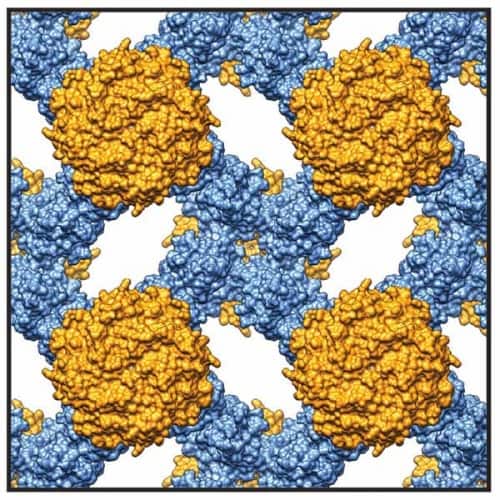When stretched in a particular direction, the material becomes thicker in the perpendicular direction instead of getting thinner. Materials with this property are known as auxetic, and the behaviour is a result of the way the internal structure deforms when force is applied on one axis. Typically, the structures have high energy absorption and shatter resistance, making them useful in impact applications such as protective clothing, the soles of running shoes, and packing material.

According to the researchers, this is the first time an auxetic material has been created at the molecular level through design. To do so, they created a sheet-like crystal made of RhuA proteins connected in a regular, repeating tile pattern. Details of the work can be found online in the journal Nature.
“We found a way to create strong, flexible, reversible bonds to connect the protein tiles at their corners,” said research lead Akif Tezcan, a professor of chemistry and biochemistry at UC San Diego.
The flexibility allows the tiles to rotate to open spaces for a porous material or to close up in a kind of adaptable sieve. Stretching or compressing the material in one direction causes the connected protein tiles to rotate in unison, resulting in a corresponding expansion or contraction in the opposite direction.
Due to the material’s minimalistic design strategy, the crystals form naturally under the right chemical conditions, with almost no tiles missing or ajar. According to Tezcan, the discovery opens up a range of possibilities for new auxetic applications, as well as opportunities to study the mechanics of self-assembling structures.
“These materials are very easy to make, yet provide many new research directions both in terms of materials applications and understanding the fundamental principles of nanoscale self-assembly,” he said.





Nanogenerator consumes CO2 to generate electricity
Nice to see my my views being backed up by no less a figure than Sabine Hossenfelder https://youtu.be/QoJzs4fA4fo